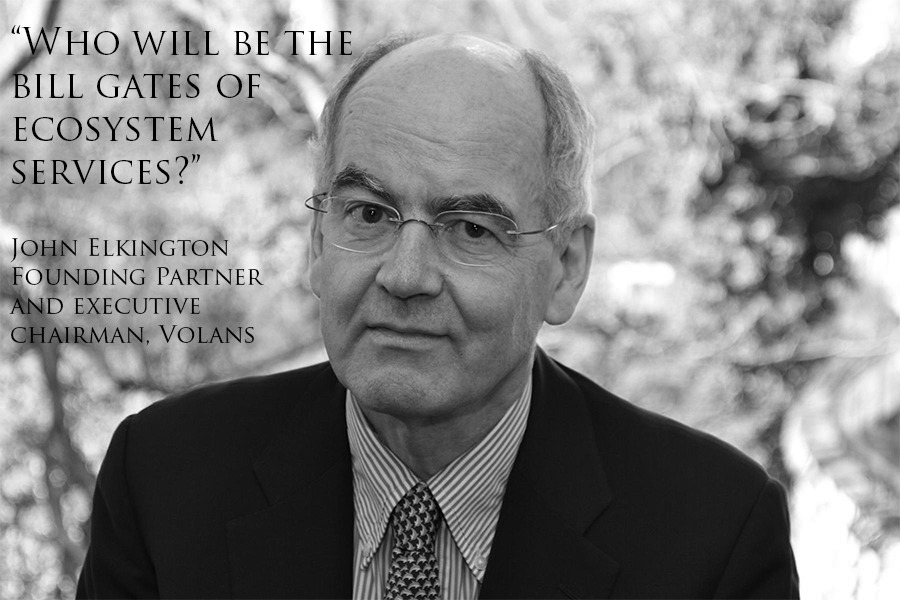Oct 17
20190
Extinction Rebellion Green New Deal for capitalism Greenwash housing crisis Labour Party neoliberalism
Capitalising on Crisis: Extinction Rebellion and the Green New Deal for Capitalism
October 10, 2019
By Simon Elmer
“‘Hey Pal! How do I get to town from here?’ And he said: ‘Well, just take a right where they’re gonna build that new shopping mall, go straight past where they’re gonna put in the freeway, take a left at what’s gonna be the new sports centre, and keep going until you hit the place where they’re thinking of building that drive-in bank. You can’t miss it.’ And I said: ‘This must be the place.’”
— Laurie Anderson
‘The climate crisis is a life-threatening symptom. But it is only a symptom. The disease is capitalism.’
— Maria Kadoglou

Solutions to the Climate Emergency
One of ASH’s working principles is that the wrong solution to a problem is not ‘better than nothing’, as we are inevitably told by those proposing it; it is, in practice, worse than nothing. Not only does it consume funding, energy, time, political will and other resources that could and should be put towards the right solution, but the wrong solution deceives the public into believing that the correct solution has been found. How long did it take the public — and not just housing campaigners — to learn that ‘affordable housing’ was a euphemism for demolishing social housing and replacing it with a hodge-podge of shared-ownership scams, rent-to-buy products and higher rents with reduced rights? And even after 20 years of demolition, social cleansing and privatisation, politicians from all political parties are still able to argue that estate ‘regeneration’ is the answer to our crisis of housing affordability. Imagine what could have been achieved with the vast sums of public money thrown at subsidising affordable housing and market-sale properties at the point of both production and consumption. Enough, surely, to have refurbished every estate in England and Wales up to the Decent Homes Standard. Enough, perhaps, to have built however many new homes for social rent for which there is such overwhelming housing need. Instead, the enormous profits made by developers, builders, housing associations and investors have been publicly funded with Right to Buy, Help to Buy, Buy to Let, Affordable Housing subsidies and the privatisation of huge swathes of council- and government-owned land in the UK. So how do they get away with it?The answer to that question is: the same way the propagandists of Neo-liberalism have got away with ten years of fiscal austerity that has cut public spending and workers’ wages while overseeing the exponential rise in the wealth of the richest. Or the same way we have committed to a never-ending War on Terror that has made the British people the legitimate target of terrorists for generations to come. They did it by declaring a ‘crisis’. Whether it’s the security crisis kicked off by the attack on the World Trade Centre in 2001; or the sub-prime mortgage crisis in which 6 million people lost their houses in the USA alone; or the subsequent financial crisis in which UK banks were bailed out by the British taxpayer to the sum of £850 billion; or the housing crisis that ensued as global capital looked for a secure commodity in which to invest its profits: the discourse of crisis, of declarations of emergency, are always employed to push through increasingly repressive measures against the very people it is claiming to save while increasing the power and profits of the institutions and corporations nominated to impose them. We’re seeing the same thing happening right now with the increased surveillance, stop-and-search powers and punitive measures granted to the police and law courts in response to the ‘crisis’ of knife crime in the capital, while leaving the economic and social causes of that crime untouched.
So why should we expect anything different from the environmental crisis? Over the past year we’ve seen the rise of Extinction Rebellion, whose calls to declare a ‘Climate Emergency’ have been adopted by Parliament if not yet by Government, by the Greater London Authority, by councils across London, and by architects across the UK. However, of the more than 600 architectural practices that have signed up to the recent manifesto, UK Architects Declare Climate and Biodiversity Emergency, many of the largest and most influential companies continue to promote, implement and financially profit from the estate demolition programme, including many of the founding signatories:
That’s just on the estate redevelopment schemes we’re aware of, and doesn’t include the deposit boxes for money laundering being designed along the Thames by such corporate architects as Foster + Partners, Rogers Stirk Harbour + Partners and Zaha Hadid Architects. The only major estate-demolishing architectural practice notable by its absence from this list is Karakusevic Carson (Claredale, King’s Crescent, Bacton, Colville, Alma, Nightingale, Fenwick, St. Raphael, Joyce Avenue and Snell’s Park estates). Quite apart from the tens of thousands of residents socially cleansed from their homes by these and other schemes, it beggars belief that this catalogue of architectural practices colluding in the estate demolition programme are now trying to pass themselves off as defenders of our environment. Or rather, it would be if it wasn’t so glaringly apparent that this collective call for a ‘paradigm shift’ in the ‘behaviour’ of UK architects is a cynical example of ‘green-washing’.
It’s no surprise, therefore, that the only mention in this manifesto about the environmental cost of demolition is watered down with the same get-out clause used on the 2017 Architects Code to ‘advise your client how best to conserve and enhance the quality of the environment and its natural resources . . . where appropriate.’ Although now declaring their intent to ‘upgrade existing buildings for extended use as a more carbon efficient alternative to demolition and new build’, this is immediately qualified by the tacked-on caveat: ‘whenever there is a viable choice’. In this context, ‘viable’ means ‘financially viable’, which means after the developer has taken their 20-25 per cent profit according to a viability assessment produced by them that is not available for public scrutiny under the get-out clause of ‘commercial confidentiality’. Once again, therefore, the environment is being subordinated to the profit margins of developers and investors, in which it represents a slice of expenditure in capitalism’s pie.
All this accords with Extinction Rebellion’s trenchant refusal to identify capitalism as the primary cause of our environmental situation. In the more than 5,000 words its website devotes to explaining ‘The Truth’ about climate change, not a single one of those words, incredibly, is ‘capitalism’. Despite the fact that, by its own admission, half of carbon dioxide emissions since the beginning of the Industrial Revolution around 1750 have been released since 1988, Extinction Rebellion has instead found a new culprit in the fashionable term ‘anthropocene’, which attributes the globe’s recent and rapidly increasing species extinction and climate change to the humanist, anthropological and a-historical abstraction called ‘man’. But then the leadership of Extinction Rebellion is composed of directors of non-governmental organisations and lobbyists for multinational energy companies, whose promotion of a ‘Green New Deal’ for capitalism — carefully erased of any reference to socialism — has been readily adopted by the Labour Party. Indeed, the Green New Deal’s 20,000-word report, published this October, on their proposed Decarbonisation and Economic Strategy Bill mentions ‘capitalism’ only once, and even then qualifies it with the word ‘financialised’, as if the two can be separated. It’s not surprising, therefore, that the architects of ‘green architecture’, employed by the same political party to demolish around 190 council estates in London alone and replace them with supposedly ‘carbon-neutral’ properties for investment by global capital, find common ground with this recourse to that old chimera of liberals that many point to but few have seen: capitalism with a human face.
One of the more cynical examples of the building industry capitalising on the ‘climate emergency’ is councils and other registered providers of social housing quoting the lower thermal performance of post-war estates when compared to new-build housing in order to justify demolishing the former, while ignoring the carbon cost of demolition. This is exactly what Leeds City council tried to do with the council homes on Wordsworth Drive and Sugar Hill Close, and the Cambridge Housing Society is doing to push through its plans to redevelop the Montreal Square estate; and yet neither local authority nor housing association has produced an impact assessment of the huge environmental costs of demolishing, removing, disposing of and replacing these perfectly serviceable homes.
In contrast to this manipulative discourse of ‘crisis’ that seeks to retain and strengthen capitalism’s iron grip on the world, ASH proposes principles and practices of a socialist architecture that intervene in, oppose and propose alternatives to the capitalist cycle of production, distribution, exchange and consumption. It is within this economic cycle — which from an environmental perspective is the unsustainable cycle of extraction, construction, demolition and disposal — that the development process is entrenched by current housing legislation, policy and funding. Confronted with the ruinous and catastrophic consequences of this cycle — which began with the industrial revolution but continues to increase exponentially with the hegemony of global capitalism — promotions of a ‘green industrial revolution’ and the implementation of ‘green architecture’ are little more than window dressing to more false solutions in the service of expanded markets, corporate competition and the increasingly militarised struggle for dwindling natural resources.
Rather than declarations of ‘climate emergency’ that serve to push through new capitalisations on the environmental crisis on a wave of orchestrated public feeling that silences public scrutiny under the newly imposed orthodoxies of climate activism, what we need is to remove all housing provision from the capitalist cycle of production. Within this cycle, the environment is accorded no more than a slice of the financial pie that is spent on the false solutions of so-called ‘green architecture’, in the same way that the social dimension of architecture is discharged by a portion of funding spent on the equally false solution of so-called ‘affordable housing’. But the environmental dimension of architecture, like its social, economic and political dimension, is not a component of a whole that is always, in current practice, subordinated to the profit margins of landlords, developers and investors. Rather, each dimension constitutes that whole — which today is that of an inhabitable planet. However much capitalism tries to separate them into portions of a financial viability assessment, in our social practice, in our economic growth, in our political policies, and in the environmental consequences these will have for us, they are indivisible. The answers to the planet’s climate change and species extinction cannot be separated from the social, economic and political system that is causing them. Any proposed solution that does not clearly identify global capitalism as their cause is the wrong solution.
Forever in our Minds

One of the lessons that emerged from the Grenfell Tower fire is that, following the Climate Change Act 2008, the retrofitting of social housing tower blocks with highly flammable, aluminium composite material (ACM) cladding systems like the one that caused the deaths of 72 people was widespread, and included at least 430 public-sector, high-rise residential buildings. Not only that, but over 320 private-sector, high-rise housing blocks had also been retrofitted with cladding. And that’s just the tower blocks, and the ones with ACM cladding systems similar to that on the Grenfell Tower. The total number of buildings in England and Wales that have been retrofitted with some form of cladding system is unknown, or at least not made public, but could run into the thousands, with one estimate that nearly 1,700 high-rise or high-risk buildings have been clad with combustible non-ACM materials.
Why? Why was this vast programme of retrofitting carried out? The justification was that it would improve the thermal performance of these buildings, reduce the energy use of their occupants and residents, and therefore lower the carbon emissions from the functioning of these buildings, bringing them closer to the thermal performance of new buildings. In fact, from reading the planning application and other documents relating to the cladding of Grenfell Tower, the cladding was primarily cosmetic, on a tower that the council had originally decided to demolish and redevelop. However, after Kensington and Chelsea failed to find a private development partner following the financial crisis, it instead voted to cover Grenfell Tower explicitly in order to ameliorate the negative effect that post-war reinforced concrete council housing has on the latent value uplift in the land, and therefore on the property values of the high-cost market-sale houses the council planned to build in the surrounding area.
It would be precipitous to generalise from this individual example of the Grenfell Tower refurbishment to every other cladding retrofit in England and Wales, even on the numerous council housing point blocks; but to accept the official reason for this programme at face value would be extraordinarily naive. More than that, it would be to close our eyes to the political dimension of housing in this country, the ongoing process of its demolition and privatisation, and the role of global investment in financing this process.
But the other answer to this question of why so many buildings were retrofitted with cladding is: because of extensive and ongoing lobbying of government departments and ministers by the peddlers of so-called ‘green’ architecture, ‘green’ finance, ‘green’ industry and ‘green’ technology by multinational corporations, non-governmental organisations, think-tanks, developers, builders, estate agents, sub-contractors and manufacturers — by, in other words, the entire building industry and its associated hangers-on of financiers, investors and profiteers looking to capitalise on the climate crisis.
The immediate result of this is that we now have around 24,800 homes in high-rise blocks that we know of, and probably far more, that are covered in ACM flammable cladding systems that circumvents the fire-safety of these buildings, that the owners of the buildings are refusing to pick up the bill for removing and replacing, that are putting the lives of over 60,000 residents at risk, that the government that privatised housing provision and deregulated building control, and that the councils that handed out the development contracts to the private development and management companies and stock-transferred the estates to housing associations, has turned its back on.
This is all a matter of fact, established by the benefit of hindsight following the public attention on the disaster of the Grenfell Tower fire. Without that attention, few of us would be aware of this programme, or of the threat it presents to the safety of the thousands of residents living in buildings clad in flammable materials ostensibly applied to improve their thermal performance. And yet, when — with those responsible for the Grenfell Tower fire still not arrested let alone charged, when the public inquiry is not even addressing government responsibility for this programme of retrofitting, and when the police investigation into its causes is set to take at least another two years — some of us dare to voice our doubts about the same lobbyists, the same NGOs, the same think-tanks, the same companies and the same political parties now calling for a Green New Deal, a Green Industrial Revolution, ‘green’ architecture, ‘green’ finance and ‘green’ growth under a ‘green’ capitalism promoted by a sixteen year-old girl sailing round the world in a ‘green’ yacht, we are denounced and trolled as sexist, misogynist, anti-autistic, ageist, sectarian climate-change deniers — and all the other idiotic insults with which the blindly faithful respond to challenges to their beliefs.
It does seem, contrary to the judgement of Abraham Lincoln, that you really can fool all the people all the time; but you’ll excuse those of us who would rather not be one of them if we retain our faculty for critical thinking, continue to be suspicious of everything politicians tell us, question what ends the spectacle of street protest is serving, and interrogate every solution proposed by capitalism to solve the latest crisis served up for public consumption. Grenfell should remain forever not just in our hearts, but also in our minds.
Big Science
One of the catchphrases repeated by Greta Thunberg is ‘Listen to the science!’ This is directed at politicians, above all, and is intended to oppose the truth of science to the lies of politics. However, science has always been linked to, and for over a century has been indivisible from, political power. The US military, in addition to being one of the greatest producers of carbon emissions in the world, is also one of the greatest funders and controllers of scientific research. Security services implementing ever more intrusive regimes of surveillance and policing both at home and abroad are another source of both funding and technological innovation, including artificial intelligence and robotics. And, of course, the extraction of resources and mechanisation of production by capitalisation is another driver, funder and user of the ‘truth’ of scientific research. Scientific truth, in other words, is profoundly political, and to assert otherwise is itself a political attempt to depoliticise the financial framework of scientific funding and the military, security and industrial uses of scientific research and its technological applications.
This is most obviously the case when we ask to whose science Greta Thunberg is demanding we listen. The social scientists behind the orthodoxies of non-violent social change being imposed on environmental activists by Extinction Rebellion? The environmental scientists promoting ‘green growth’ based on massive mineral extraction from developing countries in the sights of Western imperialism? The economic scientists arguing for a Green New Deal for capitalism from which global finance has somehow been extracted like a cancerous growth rather than its circulatory system? The political scientists orchestrating the spectacle of street protest to publicise and promote policy demands into which protesters have no input? The popular scientists who manufacture and promote the discourse of ‘crisis’ that silences debate and denounces those who ask questions as ‘climate deniers’?
Or these scientists? Antarsya UK, the Greek anti-capitalist, revolutionary, communist left and radical ecology front based in the UK, are one of the most interesting organisations I’ve come across this year. On 5 October they held a debate at SOAS titled ‘Are Climate Change and Biodiversity Loss reversible under Capitalism?’ You can listen to the presentations and ensuing debate on the recording above, and I recommend it to anyone interested in hearing the debates around the causes of, and solutions to, climate change. In response to the questions ASH has raised in response to the actions and declarations of Extinction Rebellion, all we’ve received in return from their followers so far is denunciations, insults and trolling alongside imperious demands for our own solutions to this ‘crisis’. In other words, the reaction has been no different from that ASH has received from publicising the Labour Party’s role in the estate demolition programme from the followers of Oh Jeremy Corbyn, who plays a similar role for Labour as Greta Thunberg does for Extinction Rebellion. However, although far from being experts on carbon emissions and climate change, ASH has published several articles on the environmental dimension of architecture, and in particular on the carbon costs of demolishing and redeveloping council estates; and, again, I recommend these to those still interested in listening to arguments and engaging in debate rather than policing the limits of what can and cannot be thought and said.
As ASH maintains as a principle, and own interventions seek to practice, that the environmental dimension of architecture is indivisible from its social, economic and political dimensions. This is a principle of communist thought that the capitalists behind Extinction Rebellion have explicitly denied by describing their movement as ‘apolitical’, insisting that ‘no-one is to blame’ for the climate crisis, and refusing even to use the word ‘capitalism’ when identifying what its causes might be, let alone mention the word ‘socialism’ when proposing its solutions.
If you’re interested in hearing about the social, economic and political dimension of climate change and the consequences of the solutions the organisations seeking to capitalise on this crisis are proposing, listen to the scientists in this debate: Elia Apostolopoulou from the University of Cambridge, whose research is on nature-society relationships in capitalism with an emphasis on the political ecology of nature conservation and urban political ecology; Gareth Dale from Brunel University, whose research is on the growth paradigm and the political economy of the environment, particularly climate change; and Maria Kadoglou from ‘Anti-Gold Greece’, whose research is on the impact of the large-scale metal mining required for so much so-called ‘green’ energy and technology. From listening to their presentations I wouldn’t say they share a single position — and with Gareth Dale being a staunch Corbynite I have to wonder whether he’s aware of merely the carbon costs of his party’s estate demolition programme; but they’ll tell you a very different story to the one that’s being written by the social, environmental, economic, political and political scientists imposing the orthodoxies of thinking and action being orchestrated under the umbrella of Extinction Rebellion.
Greenwashing (some examples)
Please read the rest of the article at the Architects for Social Housing website:











































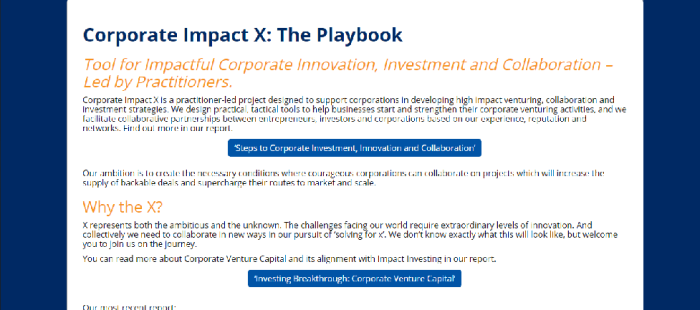
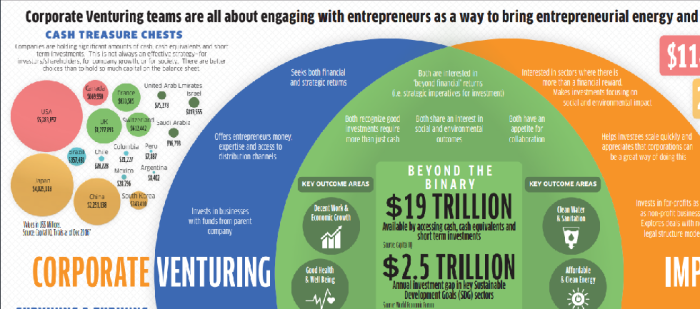





























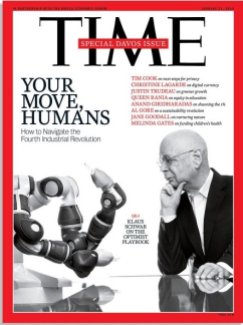 He enthuses: “While it may not feel momentous to those of us experiencing a series of small but significant adjustments to life on a daily basis, it is not a minor change—the Fourth Industrial Revolution is a new chapter in human development, on a par with the first, second and third Industrial Revolutions, and once again driven by the increasing availability and interaction of a set of extraordinary technologies”. (5)
He enthuses: “While it may not feel momentous to those of us experiencing a series of small but significant adjustments to life on a daily basis, it is not a minor change—the Fourth Industrial Revolution is a new chapter in human development, on a par with the first, second and third Industrial Revolutions, and once again driven by the increasing availability and interaction of a set of extraordinary technologies”. (5)

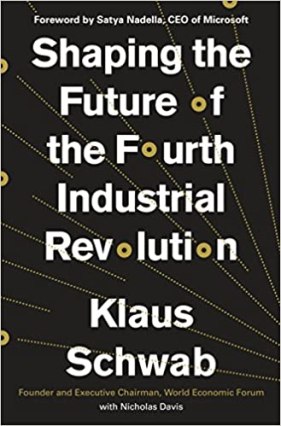 But this does not stop him presenting them in a positive light, as when he declares that “public crime is likely to decrease due to the convergence of sensors, cameras, AI and facial recognition software”. (27)
But this does not stop him presenting them in a positive light, as when he declares that “public crime is likely to decrease due to the convergence of sensors, cameras, AI and facial recognition software”. (27)


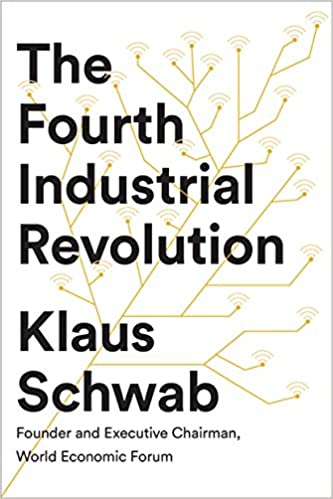 “This gives rise to an inequality that goes beyond the societal one described earlier. This ontological inequality will separate those who adapt from those who resist—the material winners and losers in all senses of the words. The winners may even benefit from some form of radical human improvement generated by certain segments of the fourth industrial revolution (such as genetic engineering) from which the losers will be deprived. This risks creating class conflicts and other clashes unlike anything we have seen before”. (51)
“This gives rise to an inequality that goes beyond the societal one described earlier. This ontological inequality will separate those who adapt from those who resist—the material winners and losers in all senses of the words. The winners may even benefit from some form of radical human improvement generated by certain segments of the fourth industrial revolution (such as genetic engineering) from which the losers will be deprived. This risks creating class conflicts and other clashes unlike anything we have seen before”. (51)
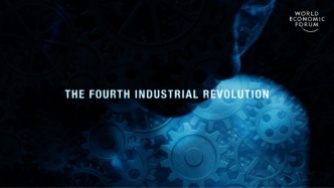 One of these “narratives” whitewashes the reasons for which 4IR technology needs to be installed everywhere in the world as soon as possible.
One of these “narratives” whitewashes the reasons for which 4IR technology needs to be installed everywhere in the world as soon as possible.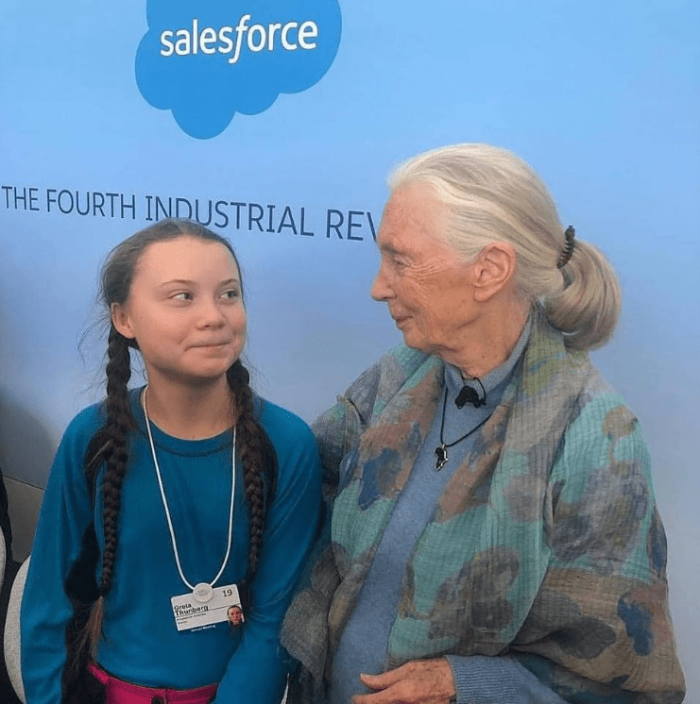



















![Source: Indigenous Environmental Network [IEN]](https://i0.wp.com/www.wrongkindofgreen.org/wp-content/uploads/2020/09/IEN-Statement-on-GND-Net-Zero.png?resize=1196%2C358&ssl=1)










